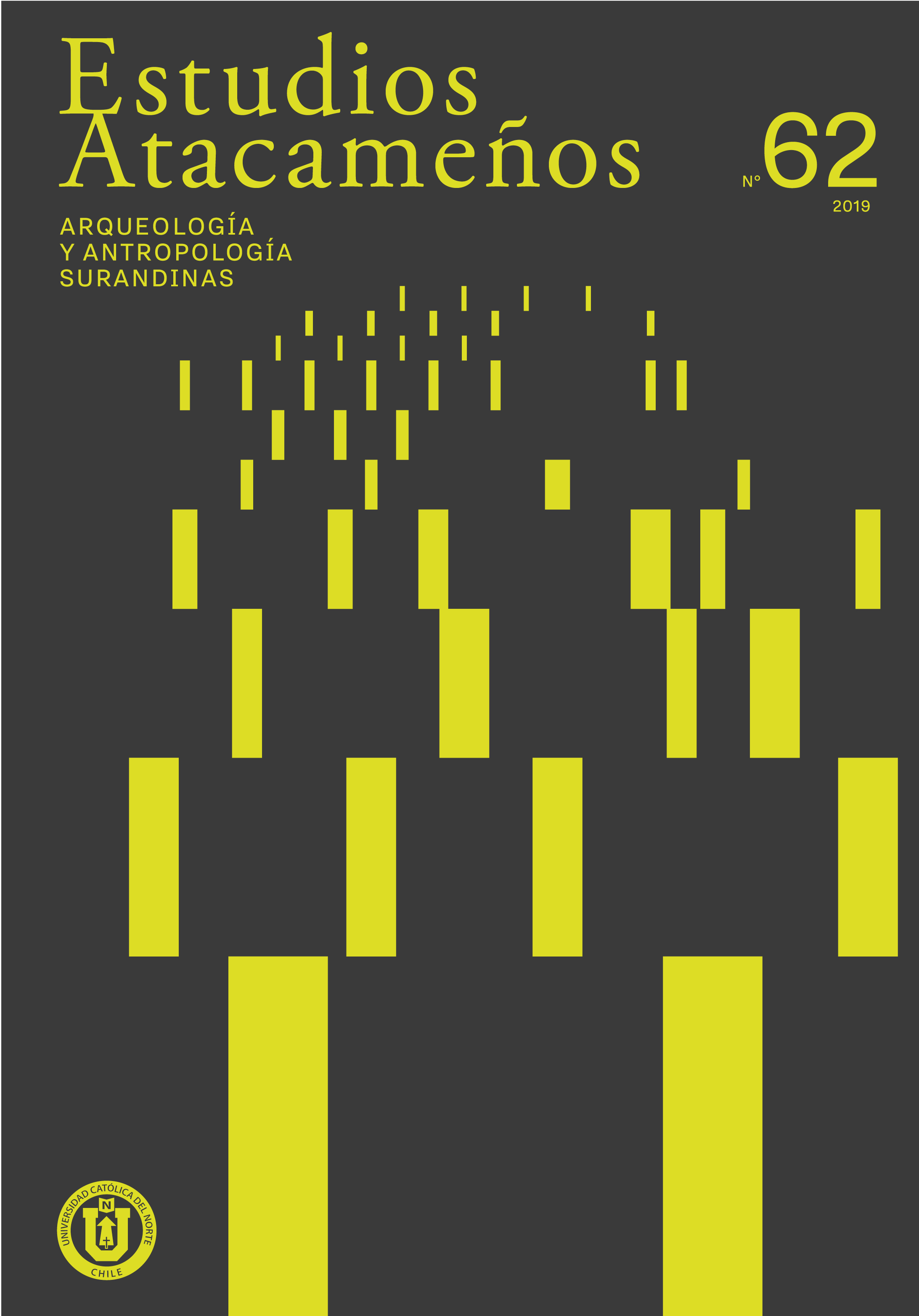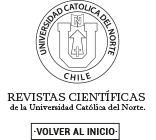The controversy of drinking water fluoridation
DOI:
https://doi.org/10.22199/issn.0718-1043-2019-0013Keywords:
fluor, drinking water, controversy, policy, actors, technologyAbstract
One of the most effective public health measures for controlling the caries has been the drinking water fluoridation. Usually, drinking water contains fluor to reduce caries incidence. In 90s, Chile started a debate about the legitimation of the utilization of drinking water fluoride in whole population and the effects that fluor has on the body, creating a polemic about this policy. The goal of this paper is to explore the controversy between the use of fluoridate drinking water for reducing caries like public health policy, from the point of view of Actor-Network theory. Experts and people of community do not agree about the effectiveness of this measure because of the lack of permission of consumer or the potential negative effects in the human health.
Downloads
References
Connett, C., Beck, J. y Connett, M. (2011). 50 razones para oponerse a la fluoración del agua potable. New York: Flouride Action Network.
ESSBIO (1994). La fluoración del agua potable, una decisión cuestionable. Departamento de Investigación y Medio Ambiente.
García, C. (2000). Algunos aspectos de los sistemas de atención bucodental en España y en la Unión Europea. Revista de Administración Sanitaria, 4(15), 483-489.
Giacaman, R. A., Bustos I. P., Bravo-León, V.,y Mariño R. J. (2015). Impact of rurality on the oral health status of 6-year-old children from central Chile: the EpiMaule study. Rural Remote Health, 2, 3135.
Giacaman, R. A., Bustos I. P., Bravo-León, V. y Mariño R. J. (2018). Oral health disparities among adolescents from urban and rural communities of central Chile. Rural Remote Health, 2, 4312.
Gómez, S., y Fernández, O. (2010). Fluoración del agua potable experiencia en Chile. En Gómez, S. (Ed.). Fluorterapia en odontología. Fundamentos y aplicaciones clínicas (cuarta edición) (232 pp.).
Guerrero, S., Cisternas, P., González, S. y Uauy, R. (1983). Contenido de Fluor de las Aguas Naturales de Chile y Recomendaciones para la Suplementación. Rev chil pediatr, 54(3), 162-166.
Holst, D. y Schuller, A. (2012). Oral health in a life-course: birth-cohorts from 1929 to 2006 in Norway. Community Dent Health, 29(2), 134-143.
Iheozor-Ejiofor, Z., Worthington, H. V., Walsh, T., O’Malley, L., Clarkson, J. E., Macey, R. y Glenny, A. M. (2015). Water fluoridation for the prevention of dental caries. Cochrane Database Syst Rev, 6, CD010856. doi:10.1002/14651858.CD010856.pub2.
Kaminsky, L. S., Mahoney, M. C., Leach, J., Melius, J, y Miller, M. J. (1990). Fluoride: benefits and risks of exposure. Crit Rev Oral Biol Med., 1(4), 261-81.
Kreimer, P. (2007). Estudios sociales de la ciencia y la tecnología en América Latina: ¿Para qué? ¿Para quién? Redes, 13(26), 55-64.
Latour, B. y Woolgar, S. (1986). Laboratory life: The Social Construction of Scientific Facts (2nd edition). Princeton, NJ: Princeton University Press.
Latour, B. (2008). Reensamblar lo social: una introducción a la teoría del actor-red. Buenos Aires: Manatial.
Law, J. (2004). After Method: Mess in Social Science Research. London: Routledge.
Mariño, R. (2013). Evaluación económica del programa de fluoración del agua de beber en Chile. Rev Chil Salud Pública, 17(2), 124-131.
Ministerio de Salud (1998). Norma de uso de los fluoruros en la prevención odontológica. Santiago, Gobierno de Chile.
Ministerio de Salud (2002). Objetivos Sanitarios para la Década 2000-2010. Santiago, Gobierno de Chile.
Ministerio de Salud (2007). Diagnóstico de situación de salud bucal. Santiago, Gobierno de Chile.
Ministerio de Salud (2008). Estudio de carga de enfermedad y carga atribuible. Informe final. Santiago, Gobierno de Chile.
Ministerio de Salud (2008). Norma de uso de los fluoruros en la prevención odontológica. Santiago, Gobierno de Chile.
National Institutes of Health (2015). Fluoridated Water. National Cancer Institute.
Petersen, P. E. (2003). The World Oral Health Report 2003: continuous improvement of oral health in the 21st century--the approach of the WHO Global Oral Health Programme. Community Dent Oral Epidemiol, 31, Suppl 1, 3-23.
Petersen, P., Bourgeois, D., Ogawa, H., Estupinan-Day, S. y Ndiaye, C. (2005). The global burden of oral diseases and risks to oral health. Bull World Health Organ, 83(9), 661-669.
Quinteros, M. E. (2016). Bioethical considerations about water fluoridation: a critical review. J Oral Res, 5(5), 200-206.
Quinteros, M. E., Cáceres, D. D., Soto, A., Mariño, R. J. y Giacaman, R. A. (2014). Caries experience and use of dental services in rural and urban adults and older adults from central Chile. Int Dent J., 64(5), 260-8.
Santos, M. (1991). La cuestión del agua potable. Diario El País. Recuperado de https://elpais.com/diario/1991/09/09/madrid/684415469_850215.html
Senado República de Chile (1996). Diario de sesiones del Senado. Publicación oficial, Legislatura 333, sesión ordinaria. Recuperado de http://www.senado.cl/appsenado/index.php?mo=sesionessala&ac=getDocumento&teseid=20948&nrobol=153611_P&tema=Proyecto&legiid=&parl_ini=58&tagid=35
Sheiham, A. (1984). Changing trends in dental caries. Int J Epidemiol, 13(2),142-7.
The British Fluoridation Society (2012). One in a Million: the facts about water fluoridation. Recuperado de https://www.bfsweb.org/one-in-a-million
Vaccari, Andrés (2008). Reensamblar lo social: una introducción a la teoría del actor-red. Revista CTS, 11(4), 189-192.
Venturini, T. (2010). Diving in magma: how to explore controversies with actor-network theory. Public Understanding of Science, 19(3), 258-273.
Vivaldi, L., Queirolo, N. y Ulloa, M. (1994). Efecto de uso sistémico del fluoruro en al salud integral del ser humano y en el ambiente: análisis bibliográfico. https://www.worldcat.org/title/efecto-de-uso-sistemico-del-fluoruro-en-la-salud-integral-del-ser-humano-y-en-el-medio-ambiente-analisis-bibliografico/oclc/503293043&referer=brief_results
Whitford, G. M. (1987). Fluoride in dental products: safety considerations. J Dent Res, 66(5), 1056-60, May.
World Health Organization (1984). Environmental Health Criteria 36, Fluorine and Fluorides. Geneva: World Health Organization.
World Health Organization (1993). Guidelines for drinking-water quality, 2nd ed. Vol. 1. Recommendations. Geneva: World Health Organization.
Downloads
Published
Issue
Section
License

All works published in Revista Estudios Atacameños (ISSN on line:0718-1043) Revista Estudios Atacameños Creative Commons International 4.0 attribution (CC BY 4.0) licence.
Authors remain the owners of their work and may republish their articles elsewhere without having to request permission, as long as they indicate that the work was originally published in Revista Estudios Atacameños (ISSN on liine:0718-1043).












